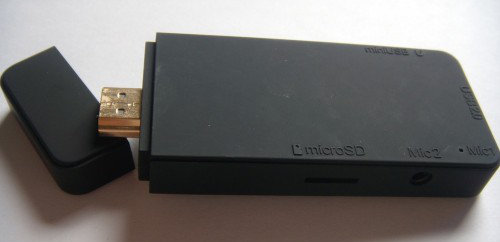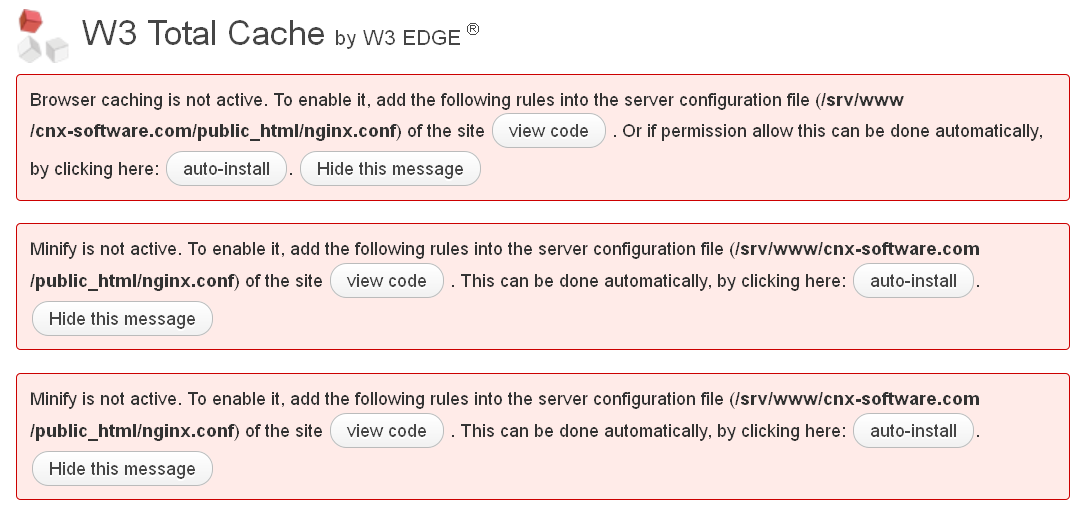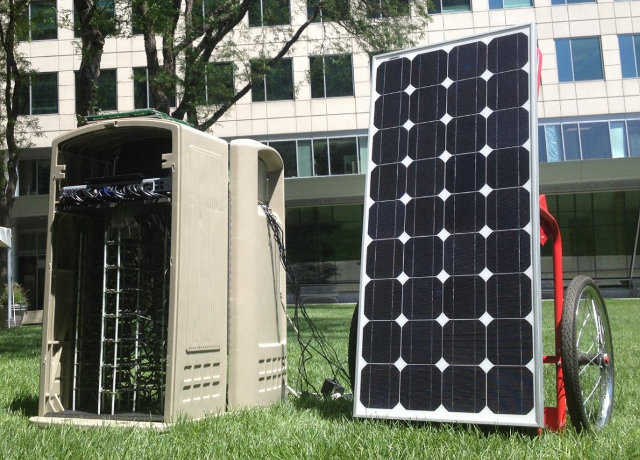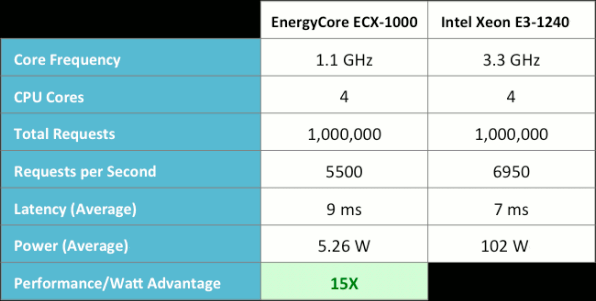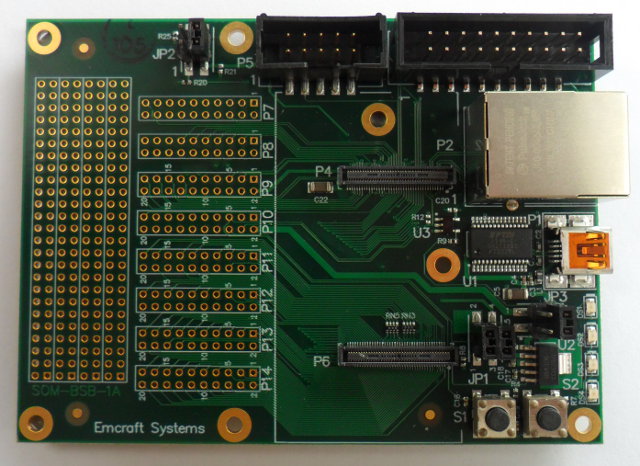Some time ago, I mentioned 5 web servers (mathopd, thttpd, busybox httpd, boa and lighttpd) suitable for embedded systems (including those featuring no MMU processors) and low end machines. I’ve recently come across Monkey web server, a lightweight open source Web Server for Linux (2.6.29 or greater), which has been designed with focus in embedded devices. Monkey is currently supported on ARM, x86 and x64, although a quick analysis of the source code shows it forks, so it won’t be supported on processors that do not feature a memory management unit (MMU) without modifications. Monkey supports the following features: HTTP/1.1 compliant Virtual Hosts Asynchronous networking model (event-driven) Indented configuration Plugins Support C API Interface Other features through base plugins: SSL Security Log writter Directory Listing Shell: Command line The developers have benchmarked Monkey against busybox httpd and nginx on a now well-know ARMv6 platform: the Raspberry Pi. They used Siege […]
Oval Elephant Android / Linaro mini PC HDMI Stick
Since Rikomagic MK802 and Zero Device Z802 mini PCs have gone viral and started the Android mini PC craze, this type of device has been popping a bit everywhere… The latest interesting device I found is Oval Elephant Mini PC based on AllWinner A10 processor with 1 GB RAM and selling for 71.49 USD. They have appears to have a whooping 11 in stocks now to be shipped on the 3rd of July, but they are also taking pre-orders and if there is enough demand (over 1,000 pieces), the price would go down to 68 USD. The device pictured above is just a prototype, and they have decided to replace the HDMI mini male output by a proper HDMI output (probably male). As I said before I prefer this form factor, especially since you can just connect mini BlueTooth dongles (no sure that one works with Android / Linux though) to […]
Migrating a WordPress Blog from Apache2 to Nginx
This blog is hosted on a Linode VPS with 512 MB RAM and running Ubuntu 11.10. Up until today, Apache2 was the web server, and it worked fine except sometimes, it reached connection and memory limits, and the blog would go offline for a short period of time, especially right after a new blog post. So this week-end, I decided to switch to nginx (pronounced engine-x) web server which is said to use less memory than Apache2. Let me know if something suddenly stopped working… nginx is a relatively recent web server, and the documentation on the web seems to become outdated pretty fast, so I’ve decided to document what I’ve done. The first thing I would recommend is to try it in your own local server first, and make sure most things are working including plugins. Testing your WordPress blog with nginx in a local server I run Ubuntu […]
Ubuntu 12.04 Server ARMHF Image for Mele A1000/A2000
I’ve seen quite a few people who want to use the Mele A1000 – or its brother the Mele A2000 – media player as a server (Sacrilege!). Since recent ARM servers are running Ubuntu 12.04, and Tom Gall has (conveniently) posted the live-build config necessary to generate Ubuntu 12.04 Server image this week, I thought I’d give it a try on Mele A1000. The image generated is a headless system running Apache 2 and sshd (openssh_server). I’ll detail the steps I followed to generate this image first, so if you just want to try the SD card image, scroll down at the end of the post. The first step is to generate Ubuntu Linaro Server rootfs, by following the Live-Build instructions on Linaro website together with Tom’s live build config. I’ve followed those steps in a machine running Ubuntu 12.04. Let’s install the required packages:
|
1 2 3 |
sudo add-apt-repository ppa:linaro-maintainers/tools sudo apt-get update sudo apt-get install live-build multistrap qemu-user-static git p7zip-full |
Configure the build and […]
Phoronix Designed a Solar Powered ARM Cluster with 48 Pandaboards
Michael Larabel of Phoronix did a “little” week-end project at the Massachusetts Institute of Technology (MIT), building an ARM cluster with 48 Pandaboards mostly with standard Pandaboards (OMAP 4430), although some Pandaboard ES (OMAP 4460) were also thrown in the mix. The 96-core cluster consumes just over 200 Watts under load and can be powered by a solar panel. The boards are stacked up vertically in an industrial trashcan, and are powered via USB instead of AC adapters. Michael’s PandaBoard ES testing indicates about a 3 Watt idle per board, 5 Watt under load, or 6 Watts under extreme load. The cluster idle power consumption is just under 170 Watts while idle, and goes slightly over 200 Watts under load. Each Pandaboard runs Ubuntu 12.04 ARM OMAP4 installed on SD cards. MIT did some testing and provided Phoronix with benchmark results such as tests following Green500 benchmarking procedure, but they are […]
ARM vs x86 Servers Benchmark – Calxeda EnergyCore ECX-1000 vs Intel Xeon E3-1240
Calxeda has released the results of ApacheBench benchmark comparing their ARM-based EnergyCore solution to an Intel Xeon server in order to showcase the performance and the much lower power consumption of their servers. Here’s the setup: Hardware: Single Calxeda EnergyCore ECX-1000 @ 1.1 GHz, 4 GB of DDR3L-1066 memory, 1Gb Ethernet network port and 250 GB SATA 7200rpm HDD Intel Xeon E3-1240 @ 3.3 GHz, 16 GB memory and 1Gb Ethernet network port. No info on hard drive provided Software: Ubuntu Server v12.04 Apache Server v2.4.2 ApacheBench v2.3 (16k request size) They performed power measurements every 2 seconds and averaged the results. Power supply overhead and hard drive power consumption were not excluded in the measurement, but the entire SoC and DDR memory power consumption were included together. For the Intel server however, they could not measure directly, so they used published TDP values for the CPU (80 W) and I/O […]
Getting Started with Emcraft Systems Cortex M3/M4 Starter Kits Running uCLinux
A few months ago, I wrote a post about running uCLinux on Cortex M3/M4. Since then I’ve had the opportunity to play a with Cortex M3 & M4 boards capable of running Linux, as last week, I received Emcraft Systems Freescale K70 Starter Kit together with their MicroSemi (previously known as Actel) Smartfusion SoM. Today, I’ll show some pictures of the baseboard and modules I received in the kit, and some details about the documentation and how to get started with the modules. Unboxing Pictures Here’s the baseboard with Ethernet, USB interface using USB-UART bridge connected to the UART0, JTAG connectors (P3 and P5), two push-buttons and a breadboard for easy access to unused signals (ADC, I2C, SPI, UART and GPIOs). P4 and P6 are the sockets to plug in the SoM. There is a lithium-ion battery (CR2016) at the back of the board for the RTC clock. As previously […]
The Future of ARM Linux by David Rusling, Linaro CTO
David Rusling, Linaro CTO, gave a presentation about the future of ARM Linux at Linaro Connect, in Hong Kong, at the end of May, where he discussed the current status of ARM Linux for mobile, consumer and enterprise markets, the future of ARM Linux and Linaro involvement. He started by saying what he wants personally: A mobile phone that can’t be easily hacked, with 10 hours of battery life for any kind of applications and data must be synchronized in the cloud. The second slide entitled “Future”, but it looked like more the present to me, addresses 3 markets: Mobile: Android vs. iOS, although Windows 8 is coming Post PC: The desktop fades and laptop/tablet merge (think Asus Transformer) Enterprise: Cooling and Power is key and the enterprise is ready for innovation, meaning it will start using ARM platforms. He then focuses on Linux explaining that Android has been the […]



